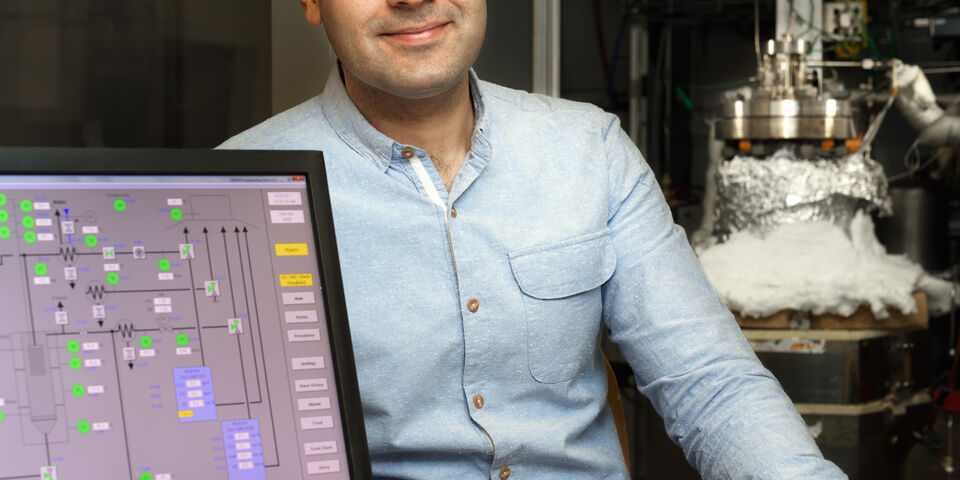Home Stretch | Hydrogen from a membrane reactor
Hydrogen is a raw material that is used widely in the chemical industry and is also regarded as an important energy carrier for a sustainable future. However, present-day production methods of hydrogen consume a lot of energy, and its transportation is also anything but efficient. For this reason PhD candidate Arash Helmi from Iran has been working on a membrane reactor which makes it possible to produce very pure hydrogen locally on a small scale.
Hydrogen is produced mainly from natural gas, predominantly so in a process that is called steam reforming. In this process, steam is added under high pressure to natural gas (chiefly methane, CH4) so that a mixture of hydrogen gas (H2) and carbon monoxide (CO) is generated: syngas. In the next phase the CO reacts largely with water to CO2 and even more hydrogen.
This large-scale hydrogen production costs a lot of energy, says Arash Helmi. “Moreover, the hydrogen still needs to be separated from the other reaction products.” Thus, if you want to use hydrogen as fuel in an electrochemical fuel cell, it must not contain more than four molecules of CO in a million, he explains. “Otherwise you are poisoning the fuel cell, as it were.”
Therefore Helmi together with colleagues from the Chemical Process Intensification group (Department of Chemical Engineering and Chemistry) developed a so-called fluidized bed membrane reactor, in which the reaction and separation steps are combined by means of a special membrane – a semipermeable membrane in which the metal palladium is the main ingredient. By means of this special reactor they succeeded in making hydrogen of the right purity in an economical way, says the Iranian. “The test reactor here in Helix has been running continuously for 900 hours, producing an output of one cubic meter of hydrogen gas per hour, at a standard pressure and room temperature. We used synthesis gas as input, but this technology is also suited for extracting hydrogen directly from natural gas.”
It is a unique achievement, Helmi thinks. The competitors - in Tokyo and Vancouver – have not yet managed to realize such long running periods, he says. “Besides, in Tokyo they use a less efficient packed bed reactor and in Vancouver they have not yet succeeded in making a cylindrical membrane, like we have. Thanks to its shape, our membrane can withstand higher pressures than a flat membrane, which enables us to attain a higher yield.”
A micro-membrane reactor would allow
us to drive electrically on biogas
At the moment a pilot reactor is being realized at HyGear in Arnhem, which is intended to have an output five times as high. “That is enough for many applications in the chemical industry. Manufacturers can set up such reactors on their own sites so that they themselves can produce the hydrogen they need as the raw material for their products.” Conversely, for the application of hydrogen as energy carrier, miniaturization is required. The idea is to fit a microreactor into the car, where it can produce the hydrogen for a fuel cell. In that way you can drive electrically on biogas, for example.
In addition to a working test reactor, Helmi’s work has also provided profound insight into the functioning of fluidized bed membrane reactors. “Together with colleagues from Delft we have conducted highly detailed measurements, whereby we have also been able to improve the simple models that are used by the industry.”
Although he considers his doctoral period as successful, Helmi does want to add a critical comment. “A membrane based on palladium will never see large-scale application, because the material is too expensive and scarce for that. This is why in our group we are working on alternative membranes.”


Discussion